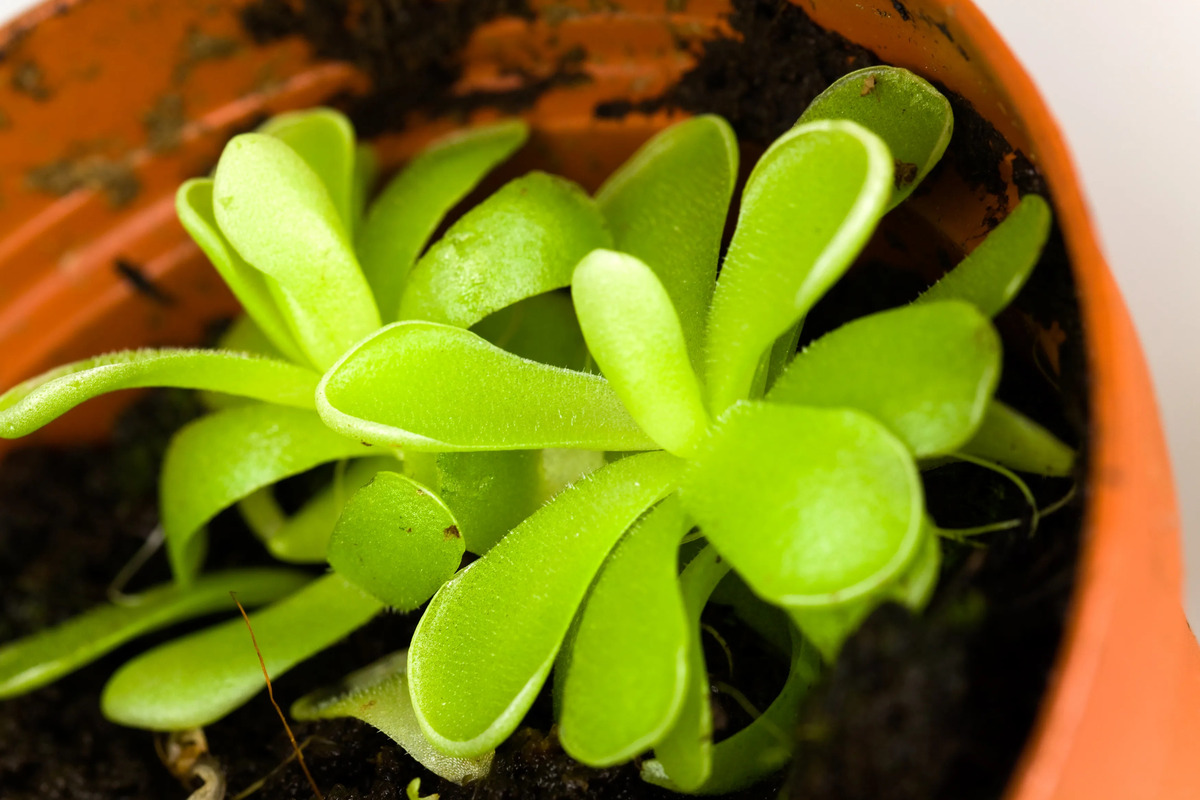Home>Gardening Tips and Tricks>Problem Solving>How To Get Rid Of Weeds In My Grass


Problem Solving
How To Get Rid Of Weeds In My Grass
Modified: January 22, 2024
Learn effective methods for solving the problem of weeds in your grass. Discover expert tips for eliminating weeds and maintaining a healthy lawn.
(Many of the links in this article redirect to a specific reviewed product. Your purchase of these products through affiliate links helps to generate commission for Chicagolandgardening.com, at no extra cost. Learn more)
Table of Contents
Introduction
Welcome to the battle against weeds in your grass! Weeds are the unwelcome guests that tend to invade the lush green expanse of your lawn, disrupting its beauty and health. However, fear not, for this guide is designed to equip you with effective strategies to tackle these pesky intruders and reclaim the pristine charm of your grass.
Weeds are persistent and opportunistic plants that can thrive in the most adverse conditions, often outcompeting your carefully nurtured grass. Their presence not only detracts from the aesthetic appeal of your lawn but also hinders the healthy growth of desired vegetation. Understanding the nature of these interlopers is the first step in devising a successful eradication plan.
In the following sections, we will delve into the various types of weeds that commonly afflict lawns, explore manual removal techniques, consider the judicious use of herbicides, and discuss preventive measures to thwart future weed encroachments. By the end of this guide, you will be well-versed in the art of weed management, equipped with the knowledge and tools to restore your grass to its former glory.
So, gear up and prepare to bid farewell to those invasive weeds as we embark on this journey to reclaim the pristine lushness of your grass.
Understanding the Types of Weeds
Before engaging in combat against weeds, it is essential to acquaint yourself with the adversaries you are facing. Weeds come in various forms, each with its own unique characteristics and growth patterns. By identifying the types of weeds infiltrating your lawn, you can tailor your eradication methods to effectively target them.
1. Grassy Weeds: These weeds resemble grass and often blend seamlessly with your lawn, making them particularly challenging to spot. Common examples include crabgrass and quackgrass. They tend to proliferate rapidly, competing with your grass for essential nutrients and space.
2. Broadleaf Weeds: Distinguished by their broad leaves, this category encompasses weeds such as dandelions, clover, and chickweed. Their conspicuous appearance makes them relatively easier to identify, and they can quickly multiply if left unchecked.
3. Perennial Weeds: Perennial weeds, including the likes of bindweed and dandelions, possess deep and extensive root systems, enabling them to regrow persistently. Their resilience demands thorough eradication to prevent their recurrence.
4. Annual Weeds: These weeds complete their life cycle within a year, germinating from seeds and culminating in seed production. Examples of annual weeds are purslane and knotweed. Although their life span is relatively short, their prolific seed production can lead to widespread infestations.
Understanding the growth habits and characteristics of these weed varieties empowers you to implement targeted removal methods. It is crucial to identify the specific weeds infesting your lawn to effectively tailor your eradication approach and achieve lasting results.
Manual Removal of Weeds
When confronting weeds in your grass, manual removal stands as a fundamental yet potent method to curtail their encroachment. This hands-on approach allows for precise targeting of weeds while minimizing the use of chemical interventions, promoting a more natural and sustainable lawn care regimen.
1. Hand Pulling: For individual weeds or isolated patches, hand pulling remains an effective method. Grasp the weed as close to the base as possible and gently but firmly pull upward, ensuring the complete extraction of the root system. This method is particularly suitable for broadleaf weeds, as their distinct foliage facilitates identification.
2. Using a Weeding Tool: For stubborn weeds with deep roots or grassy weeds that intertwine with the turf, employing a specialized weeding tool can streamline the removal process. These tools, such as dandelion diggers or corkscrew weeders, enable targeted extraction without disturbing the surrounding grass.
3. Mowing and Trimming: Regular mowing at the appropriate height for your grass type can help prevent the proliferation of certain weed species. Additionally, trimming the grass edges and borders deprives weeds of favorable habitats, contributing to a neater and more resilient lawn.
4. Vigilant Inspection: Regularly inspect your lawn for signs of weed growth, especially during their peak seasons. Early intervention can prevent weeds from spreading and establishing a strong foothold in your grass, simplifying the removal process.
By integrating manual weed removal into your lawn maintenance routine, you not only address existing weed populations but also foster a deeper connection with your lawn. This methodical approach allows you to actively engage with the well-being of your grass, promoting a healthier and more vibrant lawn environment.
Use of Herbicides
Herbicides serve as valuable allies in the battle against resilient and widespread weed infestations, providing targeted and efficient means of weed control. When employed judiciously and in accordance with manufacturer guidelines, herbicides can effectively complement manual weed removal efforts, contributing to the restoration of a weed-free lawn.
1. Selective Herbicides: These herbicides are formulated to target specific types of weeds while minimizing impact on desirable grass species. For instance, broadleaf herbicides are effective against dandelions and clover, while grass-selective herbicides target invasive grassy weeds like crabgrass.
2. Non-Selective Herbicides: Non-selective herbicides, such as glyphosate-based products, are designed to eradicate a wide range of weeds and vegetation. Caution must be exercised when using non-selective herbicides, as they can harm desirable plants if not applied with precision.
3. Pre-Emergent Herbicides: These herbicides are applied before weed seeds germinate, forming a barrier that inhibits their growth. Pre-emergent herbicides are particularly effective in preventing annual weeds from taking root, offering a proactive approach to weed management.
4. Post-Emergent Herbicides: Targeting established weeds, post-emergent herbicides are applied directly to the foliage or absorbed through the plant’s tissues, effectively disrupting growth processes and leading to weed deterioration.
Before utilizing herbicides, it is imperative to identify the specific weed species infesting your lawn and select an appropriate herbicidal formulation. Adhering to application instructions and safety precautions is crucial to mitigate potential environmental impact and safeguard the health of your grass and surrounding vegetation.
Furthermore, consider environmentally friendly herbicidal options, such as organic and bio-based herbicides, which prioritize ecological compatibility while addressing weed encroachments. By integrating herbicidal strategies with manual weed removal and preventive measures, you can establish a comprehensive weed management plan tailored to the unique needs of your lawn.
Preventing Weed Growth
While effective weed removal strategies are essential, preventing weed growth in the first place can significantly reduce the need for intensive intervention. By implementing proactive measures and fostering a robust lawn environment, you can create an inhospitable setting for weed proliferation, ensuring the long-term health and beauty of your grass.
1. Maintain Optimal Lawn Health: A dense and vigorously growing lawn can naturally outcompete weeds for resources. Regular fertilization, appropriate watering, and mowing at the recommended height for your grass species foster a resilient turf that inhibits weed establishment.
2. Aerate the Soil: Compacted soil provides an advantageous environment for weed growth. Aerating your lawn alleviates soil compaction, enhances root development, and promotes better nutrient absorption by the grass, creating an unfavorable habitat for weeds.
3. Overseed Bare Patches: Bare or sparse areas in the lawn are susceptible to weed colonization. Overseeding these areas with grass seed promotes uniform turf coverage, minimizing opportunities for weeds to take root and thrive.
4. Implement Landscape Fabric and Mulching: When creating garden beds or landscaped areas, the use of landscape fabric and organic mulches can effectively suppress weed growth by blocking sunlight and hindering weed seed germination. This approach complements the aesthetics of your lawn while minimizing weed encroachments.
5. Regular Maintenance and Inspection: Routinely inspect your lawn for signs of weed emergence and promptly address any incipient growth. Diligent maintenance, including the removal of debris and fallen leaves, prevents the accumulation of organic matter that can harbor weed seeds and promote weed development.
By adopting a proactive stance against weed proliferation, you not only minimize the need for reactive weed management but also cultivate a vibrant and resilient lawn ecosystem. Consistent application of preventive measures fortifies your grass against weed encroachments, fostering a flourishing and weed-resistant landscape.
Conclusion
Congratulations on embarking on the journey to reclaim the lushness of your grass by combating weeds effectively. Through the comprehensive understanding of weed types, the implementation of manual removal techniques, the strategic use of herbicides, and the proactive prevention of weed growth, you have equipped yourself with a robust arsenal of weed management strategies.
By familiarizing yourself with the distinct characteristics of grassy weeds, broadleaf weeds, perennial weeds, and annual weeds, you have gained valuable insights into the diverse adversaries that may infiltrate your lawn. This knowledge enables you to tailor your approach to weed eradication, ensuring targeted and effective interventions.
Embracing manual weed removal as a fundamental aspect of lawn care not only addresses existing weed populations but also fosters a deeper connection with your grass. The meticulous process of hand pulling, the use of weeding tools, and vigilant inspection empower you to actively engage in the preservation of your lawn’s health and aesthetics.
Integrating herbicides into your weed management plan, while exercising caution and adhering to application guidelines, offers a complementary approach to weed control. Selective and non-selective herbicides, along with pre-emergent and post-emergent formulations, provide targeted solutions to address persistent weed infestations.
Furthermore, by implementing proactive measures to prevent weed growth, such as maintaining optimal lawn health, aerating the soil, overseeding bare patches, and employing landscape fabric and mulching, you establish a resilient and weed-resistant lawn environment. Consistent application of preventive strategies fortifies your grass against weed encroachments, promoting a vibrant and thriving landscape.
Armed with this comprehensive knowledge and a multifaceted approach to weed management, you are well-prepared to combat weeds and restore the splendor of your grass. By integrating these strategies into your lawn care regimen, you can enjoy a lush, weed-free expanse that serves as a testament to your dedication and expertise in maintaining a healthy and vibrant lawn.


